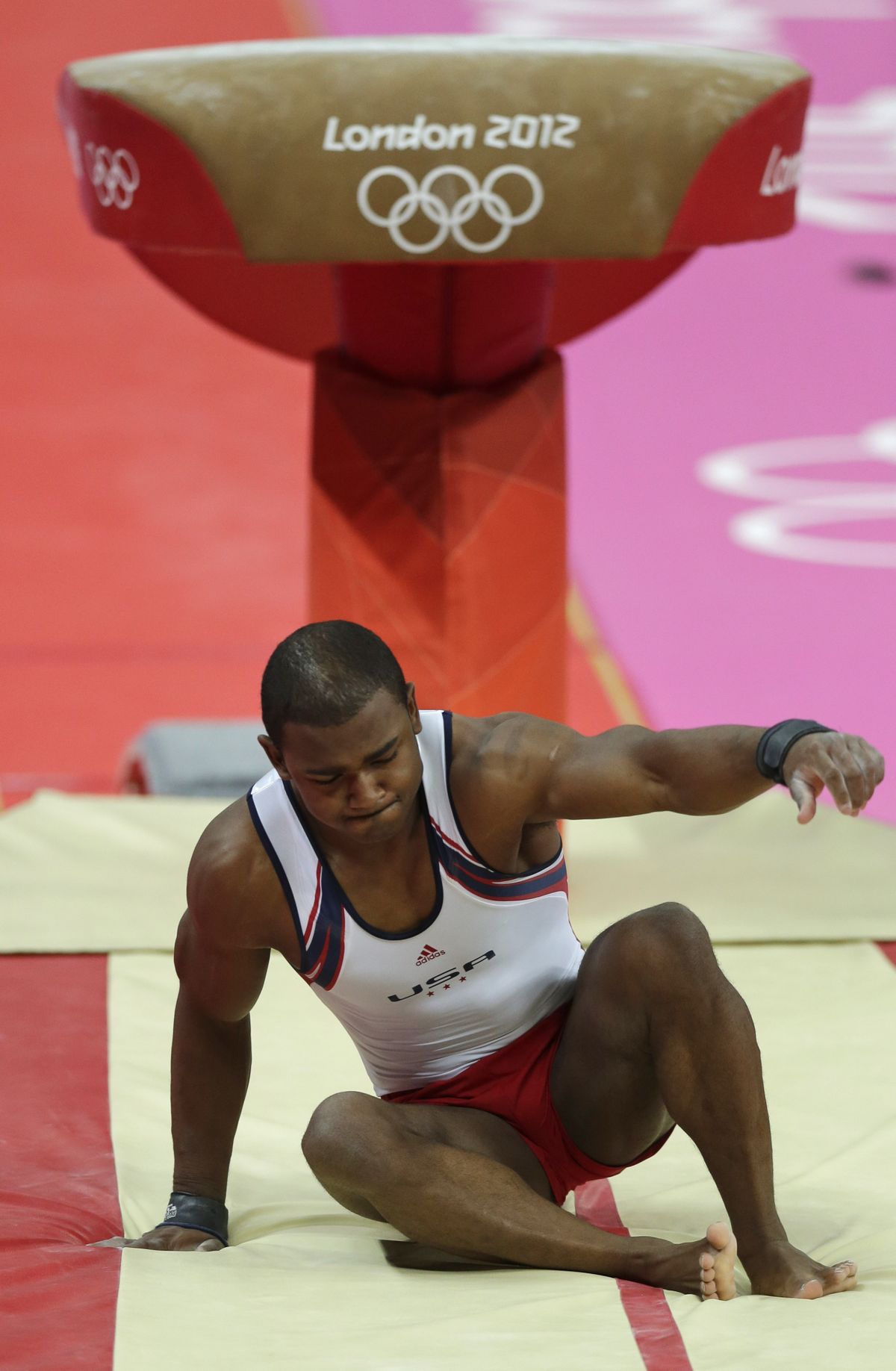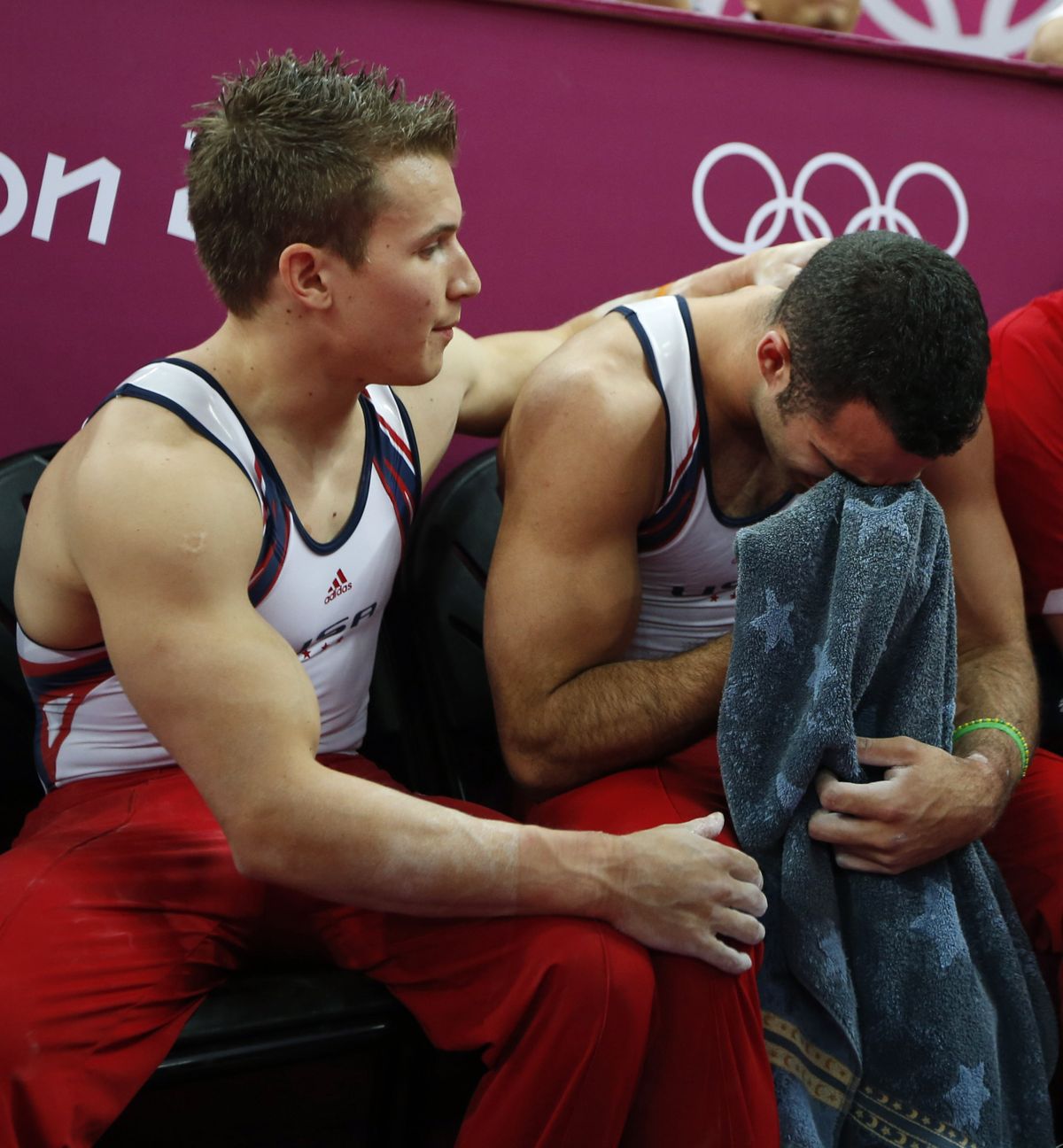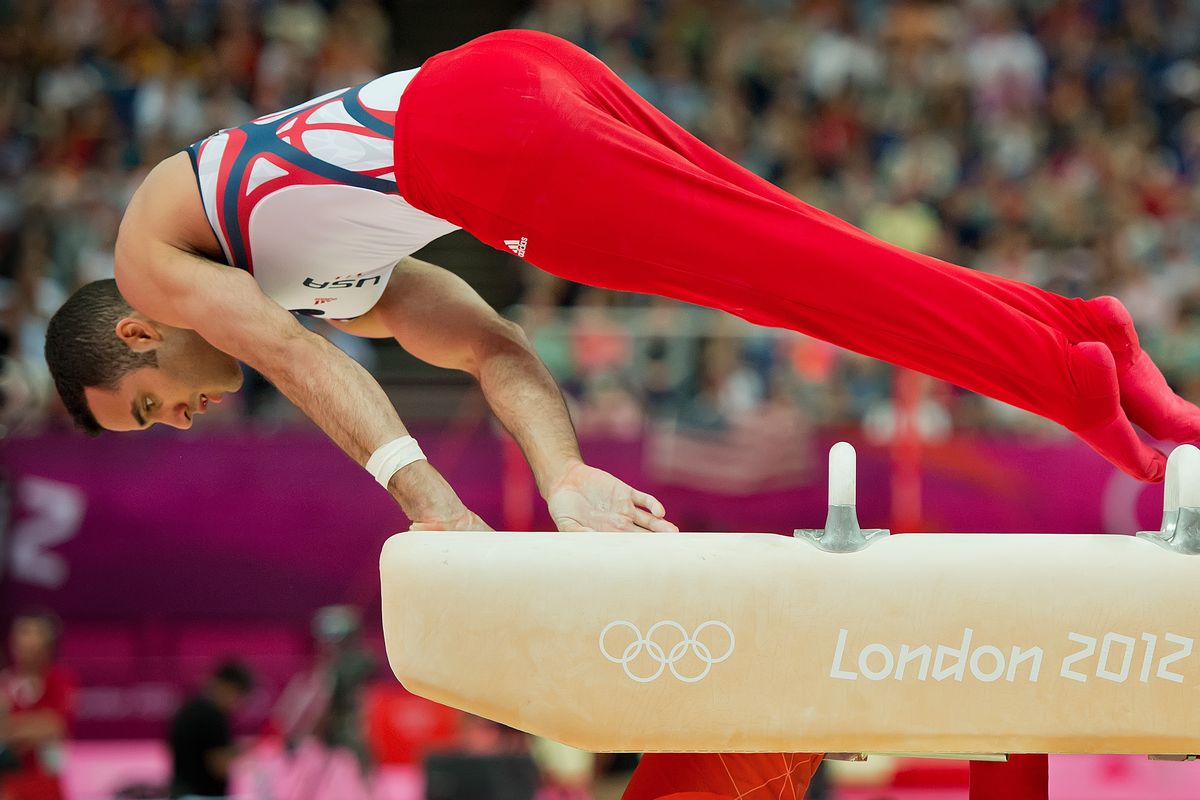Commentary: U.S. men’s hopes dashed again by pommel horse
Danell Leyva of the U.S. loses his form and would eventually fall off of the pommel horse during Monday’s men’s gymnastics team final.
LONDON – The plan was to keep it close until their last routine on the high bar. That’s where those things Americans like to think they still do better than anybody else in the world – invent stuff, take risks and show off – were supposed to finally deliver some golden dividends.
Instead, by the time the high-flying U.S. men’s team arrived there Monday night, it wasn’t close enough to matter. They’d long ago been tripped up by the pommel horse, the most pedestrian piece of equipment in gymnastics, a 4-foot tall, 5-foot long beast of burden they haven’t learned how to ride for nearly three decades and counting.
“There’s no explaining it. I’ve only been around so long, so I don’t know the whole history,” John Orozco said after the U.S. contingent finished a disappointing fifth. “We’ve been trying to get better. That’s all we can do.”
Those two years of talk about how this U.S. squad was ready to climb in the saddle and hang with the sport’s big boys – the Chinese and Japanese, not coincidentally, the gold and silver medalists here – turned out to be just that. Talk.
The bronze medal the Americans won at last year’s world championships and the first-place finish in qualifying just two days ago seem long, long ago.
The meet was all of 15 minutes old when the three U.S. team members moved over from the floor exercise mat to the horse, and soon enough, two of them wished they hadn’t. Orozco and Danell Leyva wrestled for the biggest share of the blame afterward, but that was unnecessary: There was more than enough to go around.
Leyva went first, picking up too much speed as he worked his way from one end toward the other, spinning off the horse like a bad rodeo rider.
Orozco, it turned out, was actually too good at hanging on.
He, too, was making his way across the horse when he inadvertently plopped his butt down in the middle of the routine. The U.S. men were fourth heading into the rotation; eighth out of eight teams coming out.
“There’s nothing we could have really done differently,” said Sam Mikulak, whose performance was sandwiched between those two. “We’re a young team. We’ve never experienced anything like this before.”
Like his teammates, Mikulak was only too eager to own up for the failure.
“There are so many other things,” Mikulak said. “I fell on floor. I made a mistake on floor, didn’t have the best vault of my life. This is a team. There’s no one person who can screw it all up.”
Speaking of that, some responsibility for the poor showing Monday night should find its way into U.S. coach Kevin Mazeika’s lap. Call it second-guessing, but he had at least one shot to bolster the U.S. team’s performance on the pommel horse, an apparatus on which it hasn’t earned a medal since Peter Vidmar won gold in 1984.
Alternate Alex Naddour is a specialist on the horse, but was left out of the competition because he didn’t contribute much on any other piece of equipment.
“I’m not sure how or if you make that call,” said Vidmar, chairman of USA Gymnastics.
His 1984 squad remains the only U.S. men’s team to win gold.
“There’s so much more brute strength and power required to compete in the rings, the vault, even floor exercise than when I competed,” Vidmar said. “Yet the one place none of that extra power helps you out is on the horse.”
But Vidmar conceded the Asian powerhouses and even Britain, a surprise bronze medalist after a centurylong drought in the men’s team competition, had found athletes strong and versatile enough to work across all six pieces of equipment.
“Our guys are younger than most of the other” teams, Vidmar added. “They’ll figure it out.”
So will Mazeika, who acknowledged afterward he might have been caught looking ahead.
“We thought the order was going to shake out very good for us. We’re almost always phenomenal on the high bar,” he said.
And so they were again.
Orozco led off, and throwing himself around with abandon, posted a 15.33. Captain Jon Horton, the old man of the squad at 26, followed with another sizzling routine, highlighted by three straight flips over the bar. He then stuck his landing, saluted a handful of U.S. flags in the crowd and hugged assistant coach Tom Meadows, who’s trained him almost without interruption since Horton was 6. Leyva topped both of those shows with a scintillating 15.86.
It was wonderful stuff, precisely what the Americans had promised.
Unfortunately, it was also way too late.


